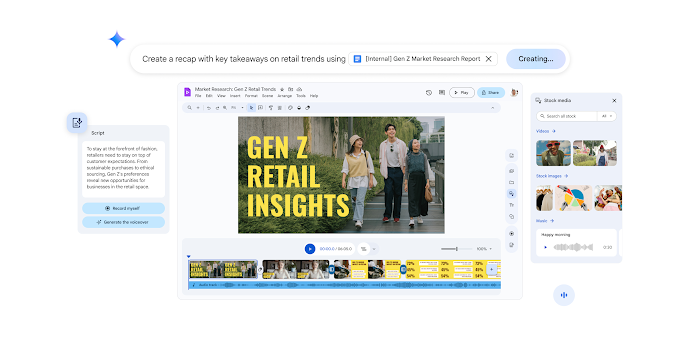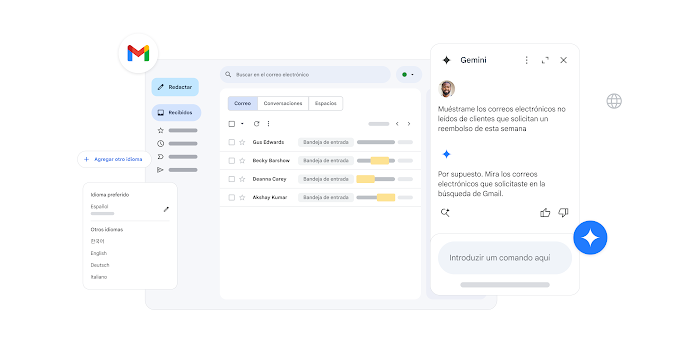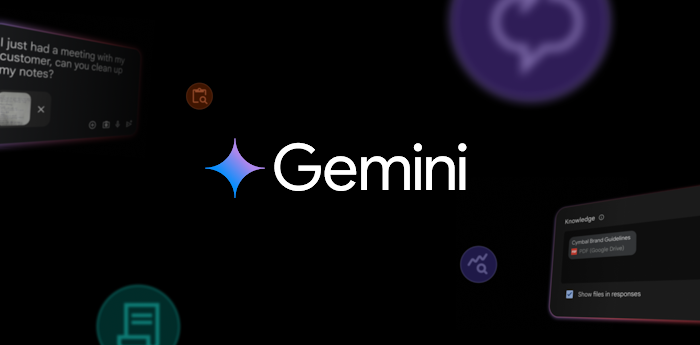How AI can actually improve human connection at work
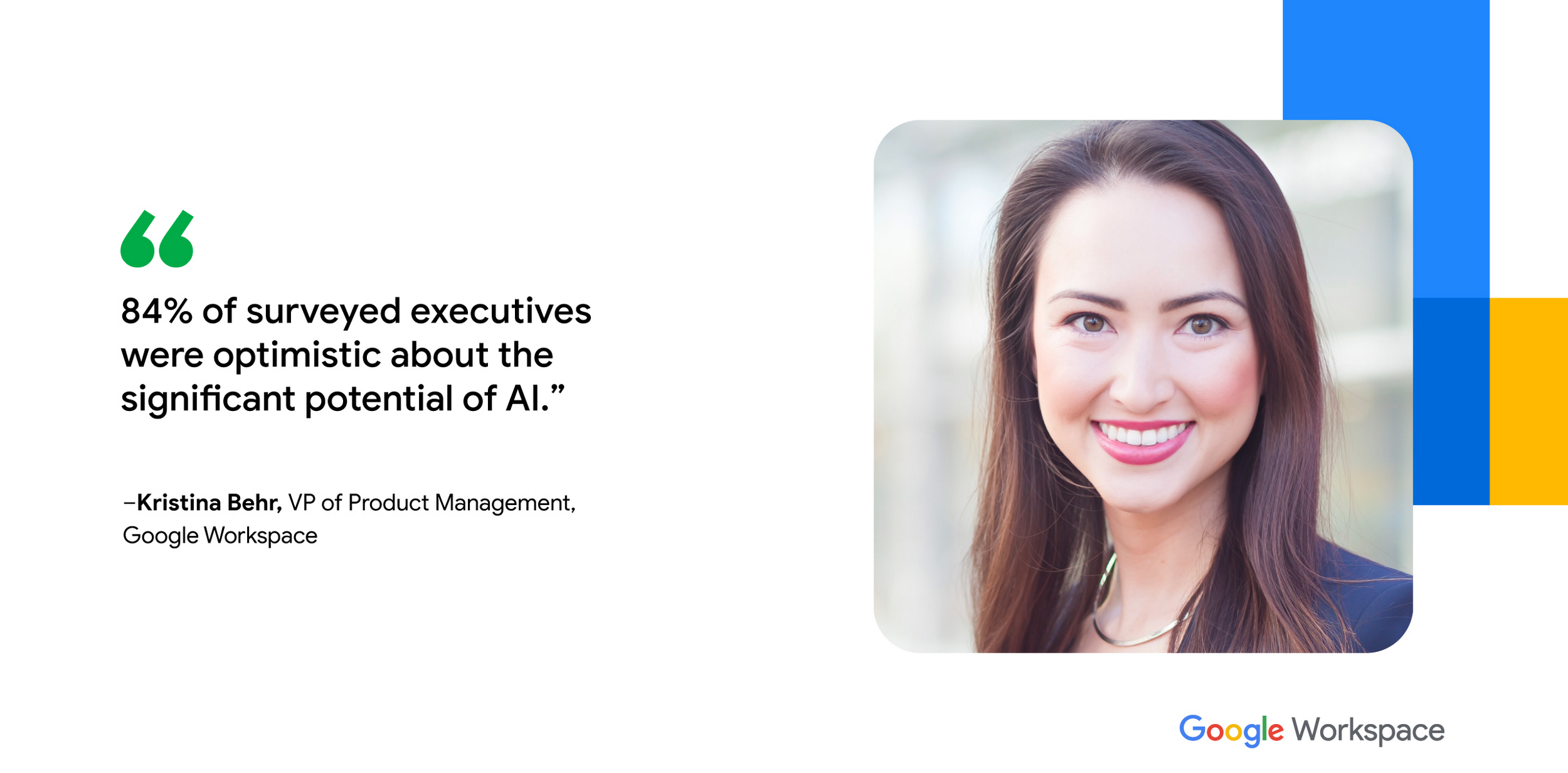
Kristina Behr
Vice President, Product Management, Google Workspace
Google Workspace Newsletter
Keep up with the evolving future of work and collaboration with insights, trends, and product news.
SIGN UPEditorial note: Duet AI for Google Workspace is now Gemini for Google Workspace. Learn more. This post also appears in our LinkedIn newsletter AI@Work with Google Workspace.
According to an Economist Impact survey, sponsored by Google Workspace, the vast majority of business leaders believe AI can contribute to increased innovation and creativity, while people will stay at the center of work.
The new work landscape
We’re living through a once-in-a-generation transformation in the way we work. The change abruptly kicked off with hybrid and flexible models, and new technologies like generative AI are helping to accelerate it even faster. As these two forces converge, the key to organizational success is to prioritize people and keep them at the center of how and where work happens.
To better understand the shifting work landscape, Economist Impact has been working on a multi-year research program, supported by Google Workspace: Making work more human. In 2021, Economist Impact surveyed more than 1,200 knowledge workers and found over 75% believed that flexible work will become a standard practice for most organizations. This year, Economist Impact surveyed more than 900 business leaders across 12 countries to understand their views on flexible work models. The findings of the study confirm that the combination of these two forces — flexible work and the use of emerging technologies like generative AI — has given organizations an opportunity to reimagine how work gets done, creating a step change for millions of workers.
Flexible work: What separates leaders and laggards
Despite significant changes in how, where, and when many of us work, there have been few data-driven, global studies to quantify the growth of flexible work models. Economist Impact designed a first-of-its-kind barometer to measure the global state of flexible-work adoption across four pillars: culture & strategy, work policy design, implementation, and evaluation & improvement. Business leaders surveyed, assessed their organizations against each of these categories.
The results are enlightening. At first glance, 90% of workplaces offer at least flexible working hours and/or location to some or all employees. But a closer look reveals that flexible work adoption and implementation varies greatly — from a score of 30 out of 100, on the low end to a high of 84, with the average at 65. These results indicate two things: Most organizations are well into their flexible work journeys, but they’re taking different approaches — which is creating variations in outcomes and there is plenty of room for improvement.
Other key takeaways from the barometer:
“Flexible work leaders” prioritize employee wellbeing. They score 71 out of 100 for how they evaluate policies, and emphasize employee welfare and support vs. laggards who are at 39.
Despite positive perceptions of gains in productivity, company performance, and employee wellbeing, the biggest remaining challenges are around workplace culture and implementation:
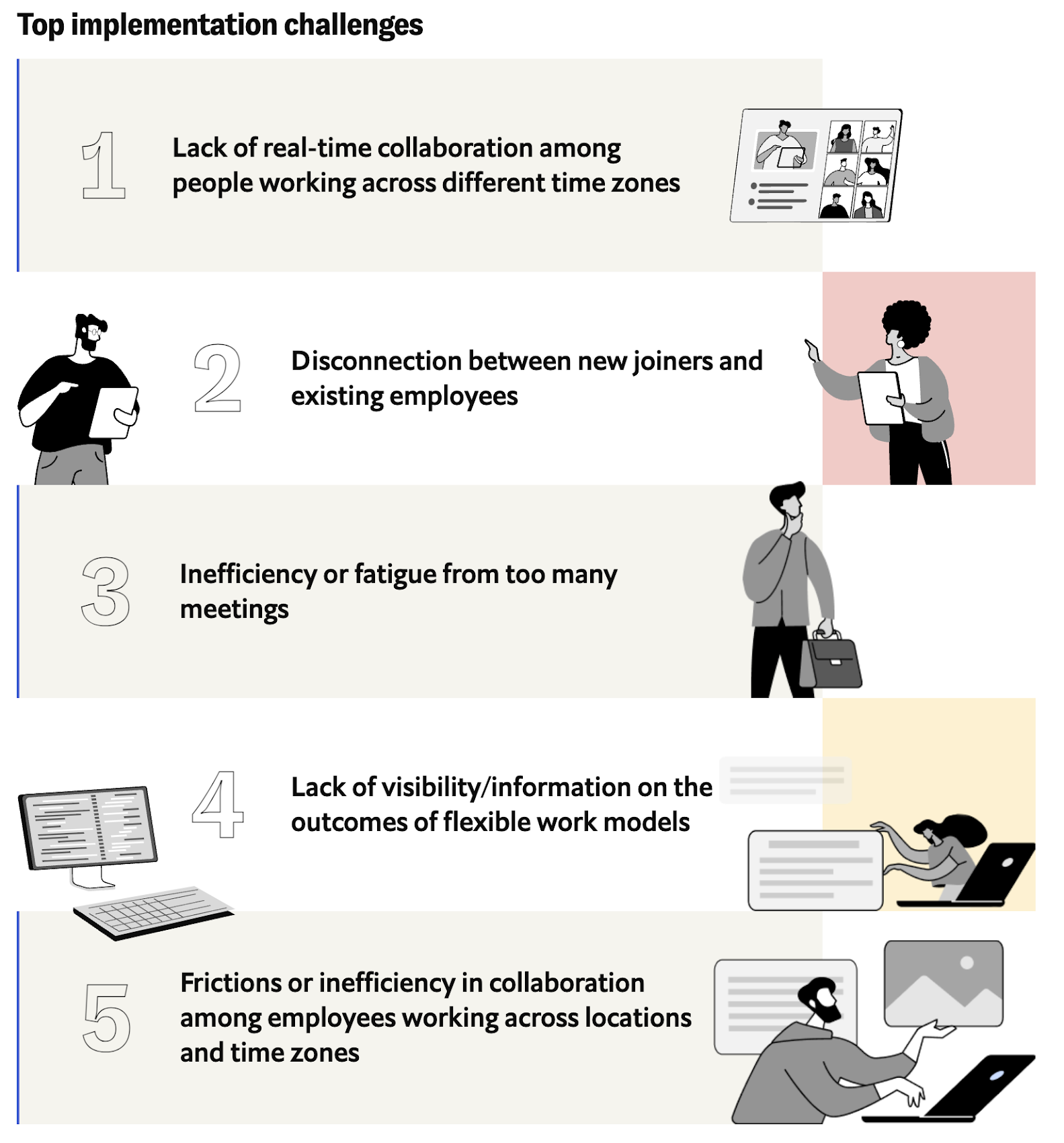

These challengescombined with an overall decrease in trust between managers and direct reports, a trend identified by 63% of leaders and 46% of laggards, call for creative solutions.
Tech-related issues remain some of the biggest challenges for flexible work
Flexible work is linked with technology, and its successful adoption requires tools that connect employees across different locations and roles. But the survey found that two of the top five challenges for flexible work were related to technology:
Poor/few technology tools to support distributed collaboration
Unequal access to technology tools among employees from different regions or functions (e.g., knowledge vs. frontline workers)
To bridge these gaps and foster secure collaboration from anywhere, organizations need technology that works for all employees. Tools in the new era of work should be as easy to learn and use on the factory floor as they are in the office or on the go. Those tools should also bring more faces, voices, and perspectives into the conversation — from decision-making to policy setting.
The role of generative AI in the new era of work
Executives see the potential in new technologies and are keen to invest in AI. The survey found that the vast majority of leaders (86%) believe humans will stay at the center of work, with AI in a supporting role, eliminating mundane tasks and contributing to increased innovation and creativity.
Generative AI, which uses data and machine-learning models to create new content — from images to text to music — will be especially important in fueling innovation and creativity. This powerful technology makes it easier for an organization to generate new ideas, and it gives employees more time to focus on their top priorities. AI is no replacement for the ingenuity, creativity, and smarts of real people — as we’ve talked about with our own launch of Duet AI for Google Workspace — but it helps to amplify these things. It works best as a collaboration partner, a source of inspiration, and a productivity booster.
84% of surveyed executives were optimistic about the significant potential of AI to support flexibility, innovation, and creativity. It’s worth looking at how Duet AI can help in each of these areas:
Flexibility. With the increase in places, time zones, and ways work happens, distributed teams may find it hard to collaborate and make decisions together in real time. Duet AI in Google Meet will soon help resolve that challenge by capturing meeting notes, action items, and video snippets with a simple “take notes for me” prompt. And it will send a recap out afterward, even to people who couldn’t make the meeting. Duet AI in Chat is also becoming a powerful AI collaborator. It can recommend helpful files, send reminders of tasks and deadlines, and provide a recap of missed conversations.
Innovation. Innovation depends heavily on brainstorming to bring new ideas to life. Visualizing ideas can also help early stage thinking. A feature like help me visualize in Duet AI develops ideas in unexpected ways. Imagine a global athletic company is launching a new shoe line. A prompt like “create 10 images of white sneakers in front of different iconic mountains” could help a marketing team develop campaign designs for an internal pitch meeting. And if they don’t love the first results, they can easily tweak details, combine ideas, or generate an altogether new batch of images in just a few seconds.
Creativity. Duet AI can help people conquer the blank page and kick-start their creative flow — maintaining it while AI takes care of routine tasks like email summaries, project plans, and documentation. When it’s time for that shoe company to come up with a product name, each team member might give Duet AI unique prompts to generate dozens or hundreds of name ideas within seconds. The team can then riff on the ideas they like best to inspire further creativity.
In the new era of work, Duet AI helps people get back to the core parts of their job, and focus on what they enjoy and do best. Duet AI jump-starts the parts that make us human — our creativity, ingenuity, and expertise.
Learn more about flexible work trends
To explore the findings from the study, download the full Economist Impact report or take a spin through the infographic. You can also see how your organization scores on the flexible work barometer with this self-assessment tool.
